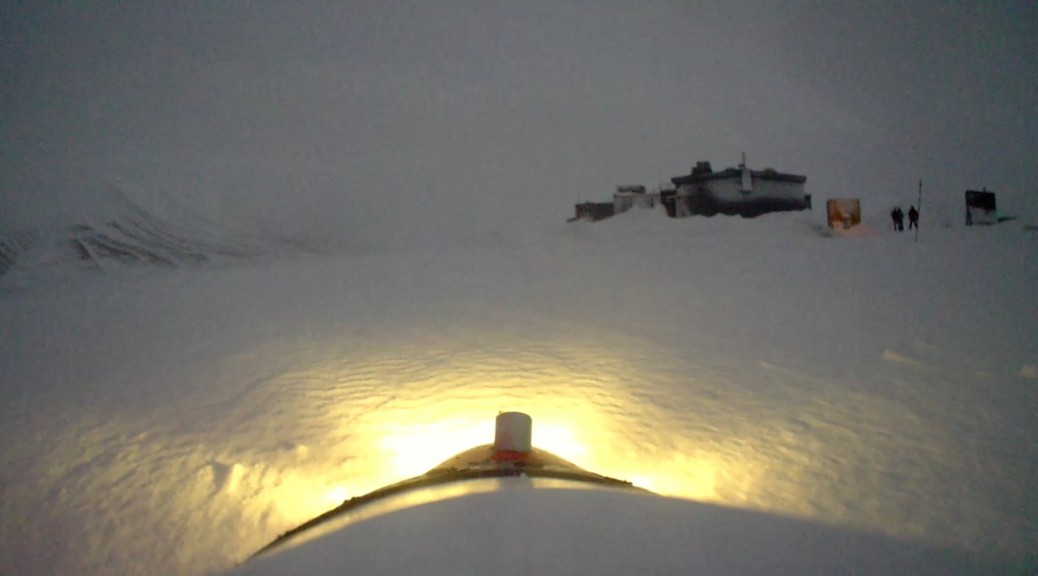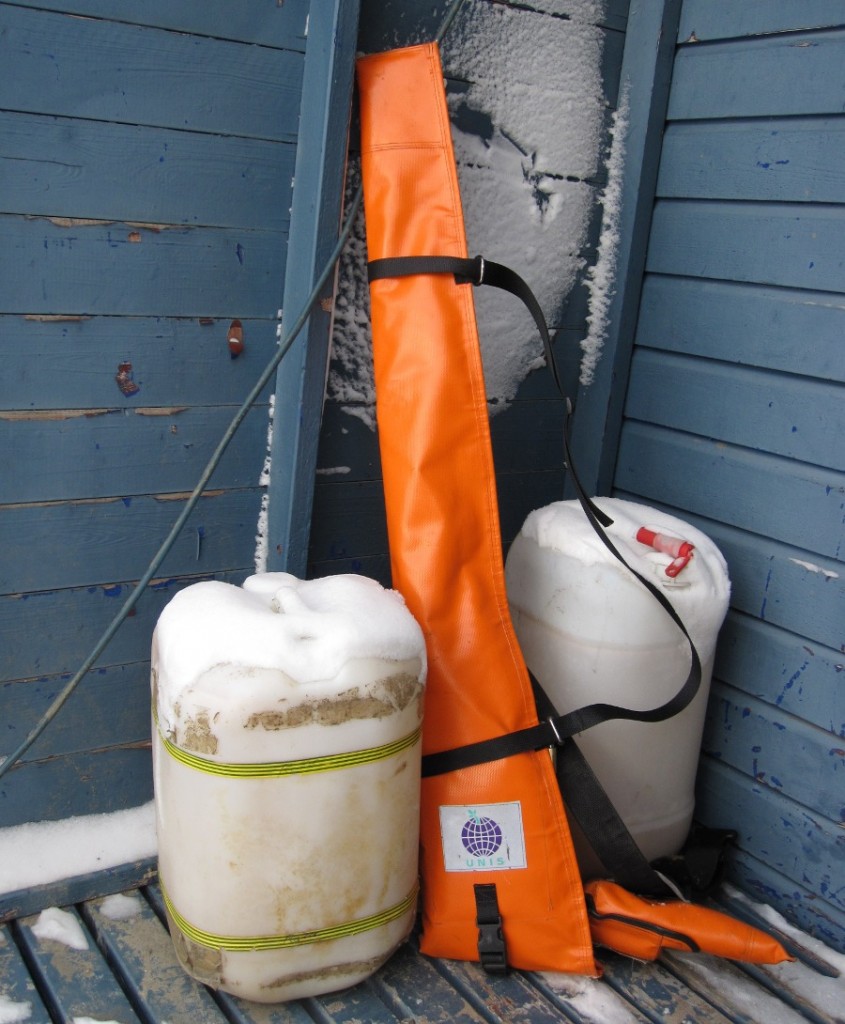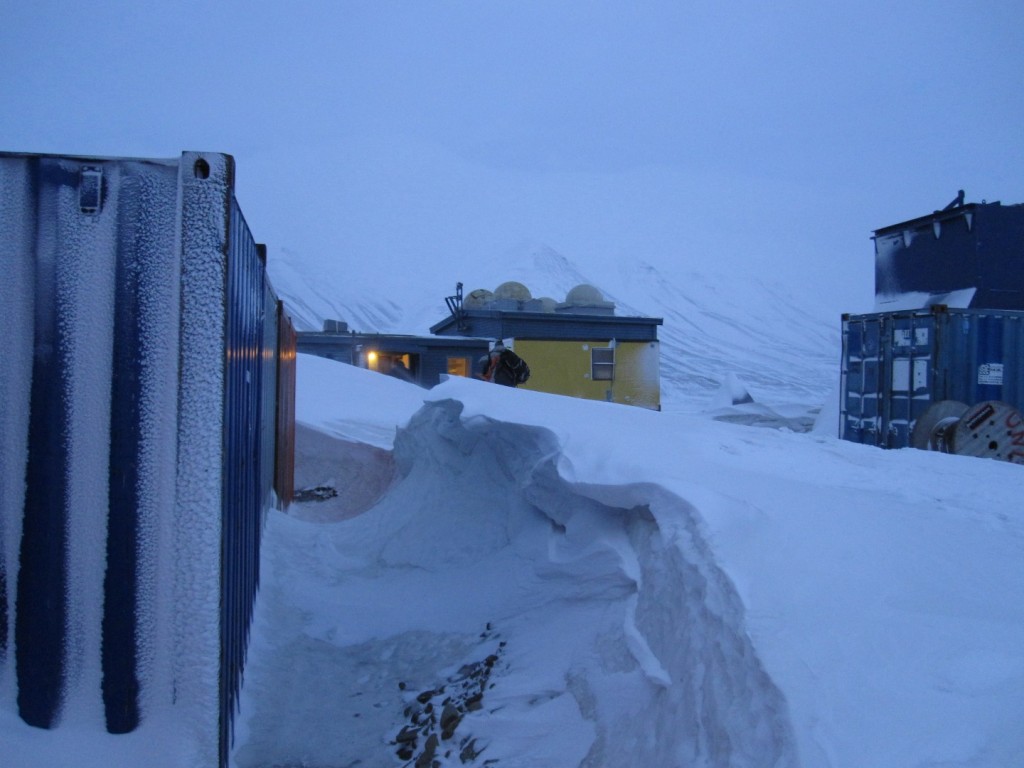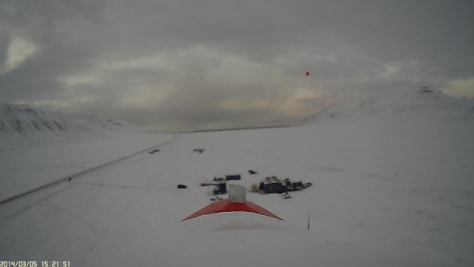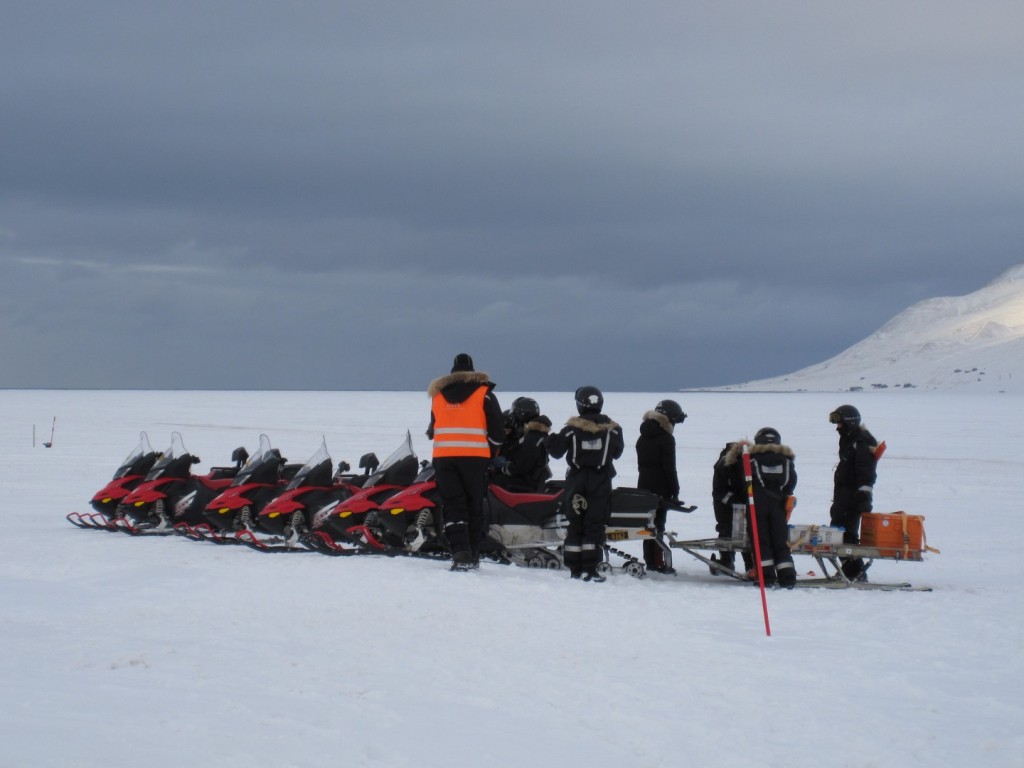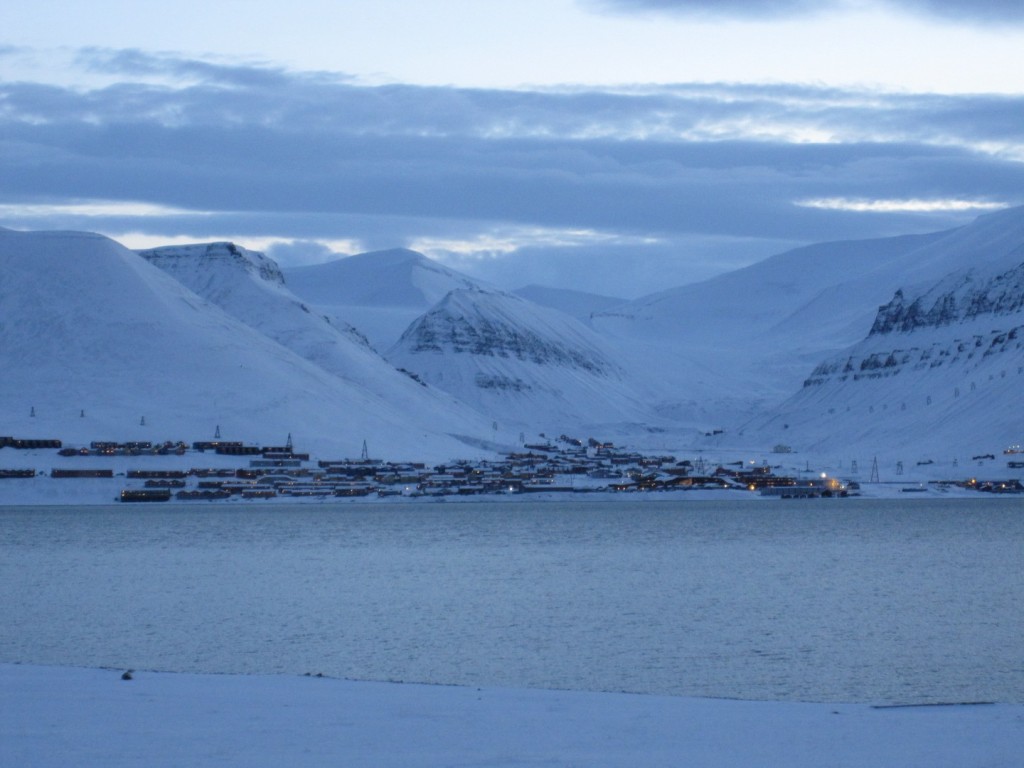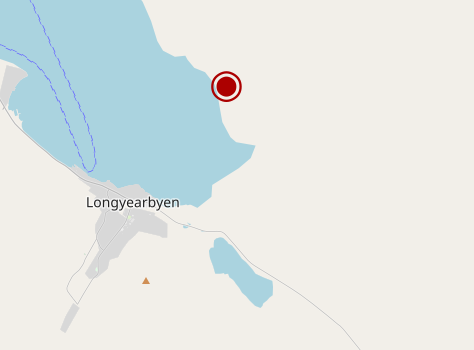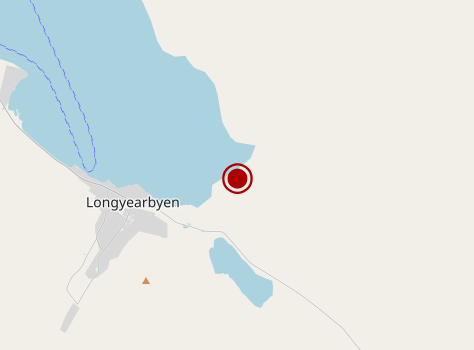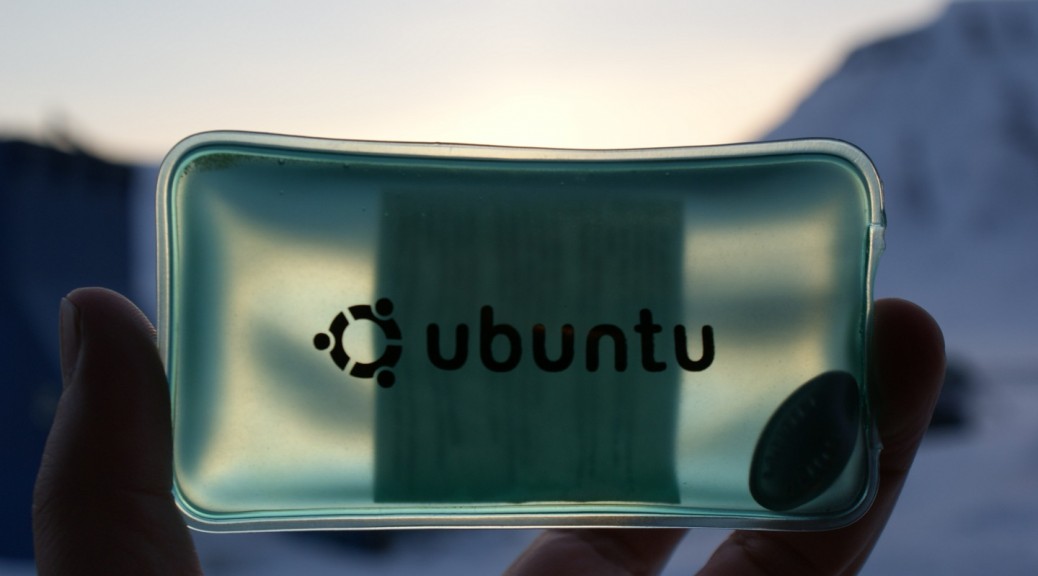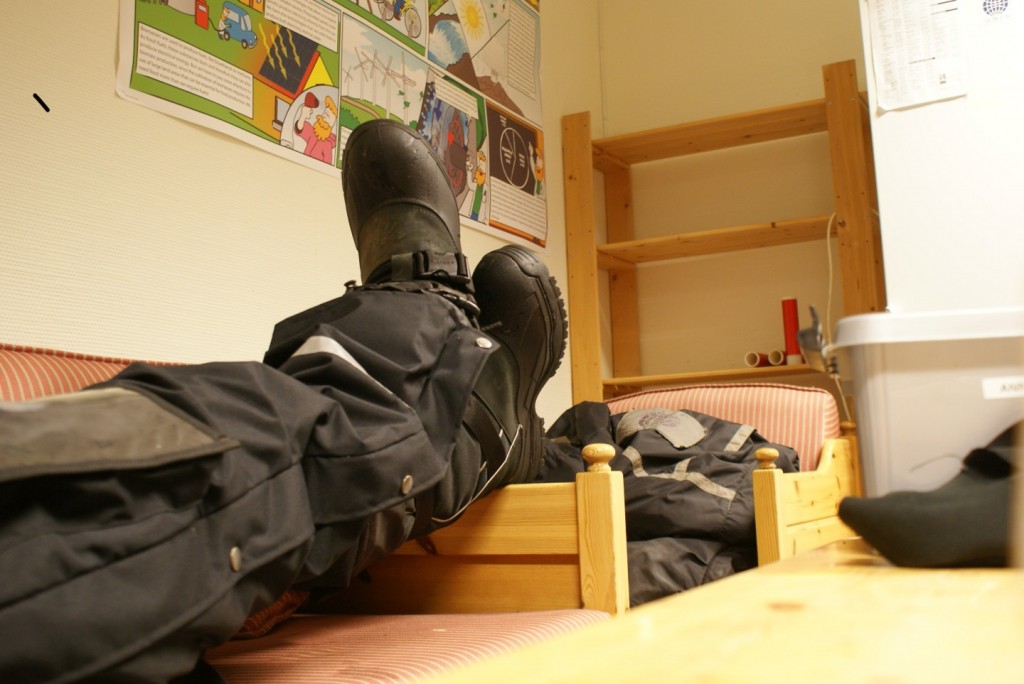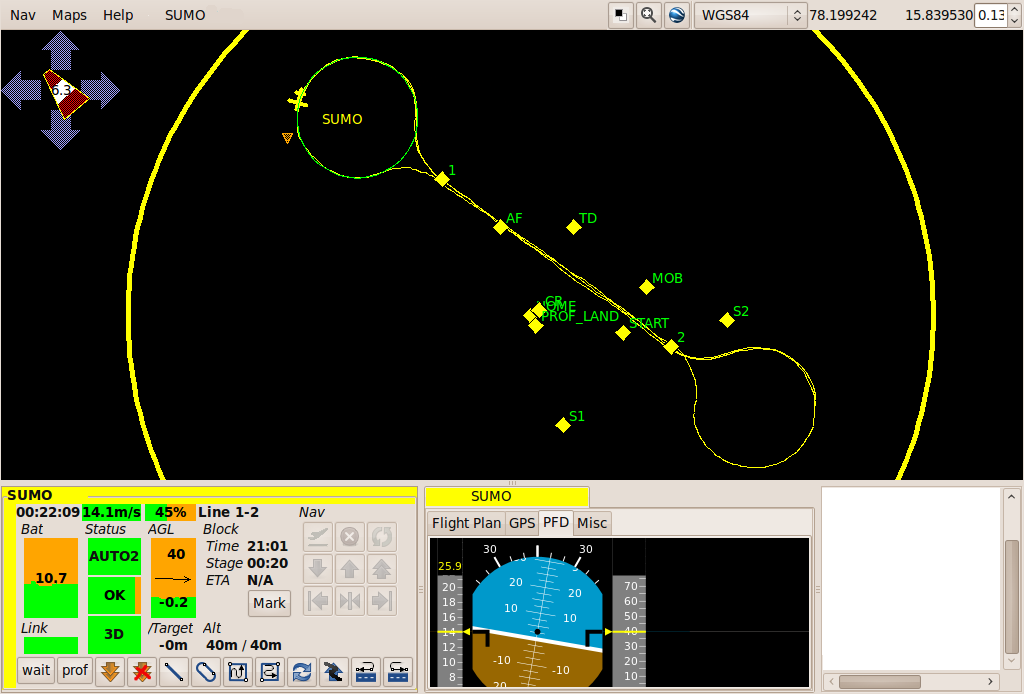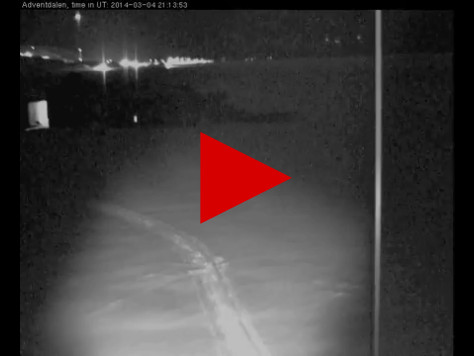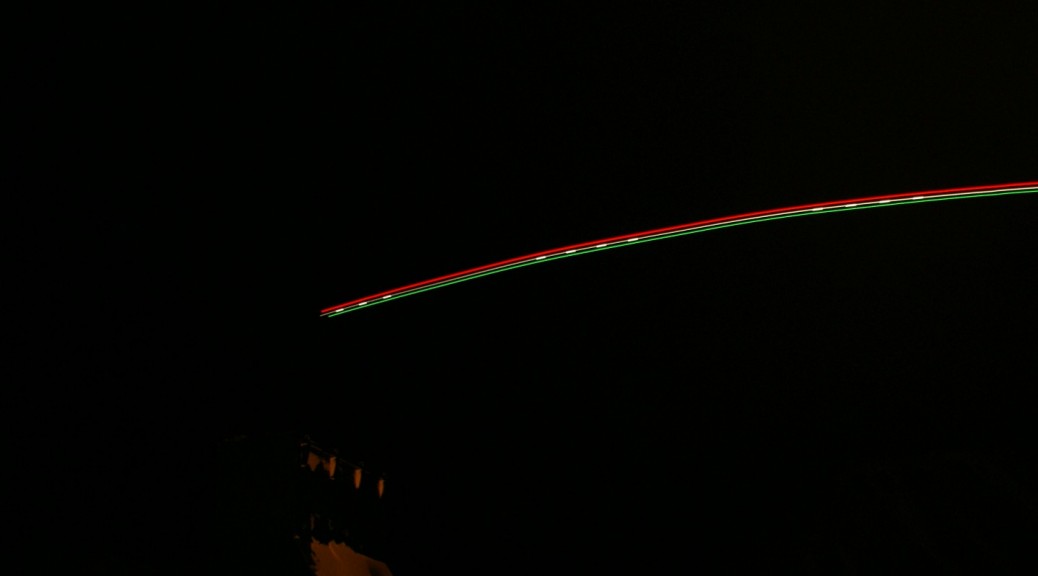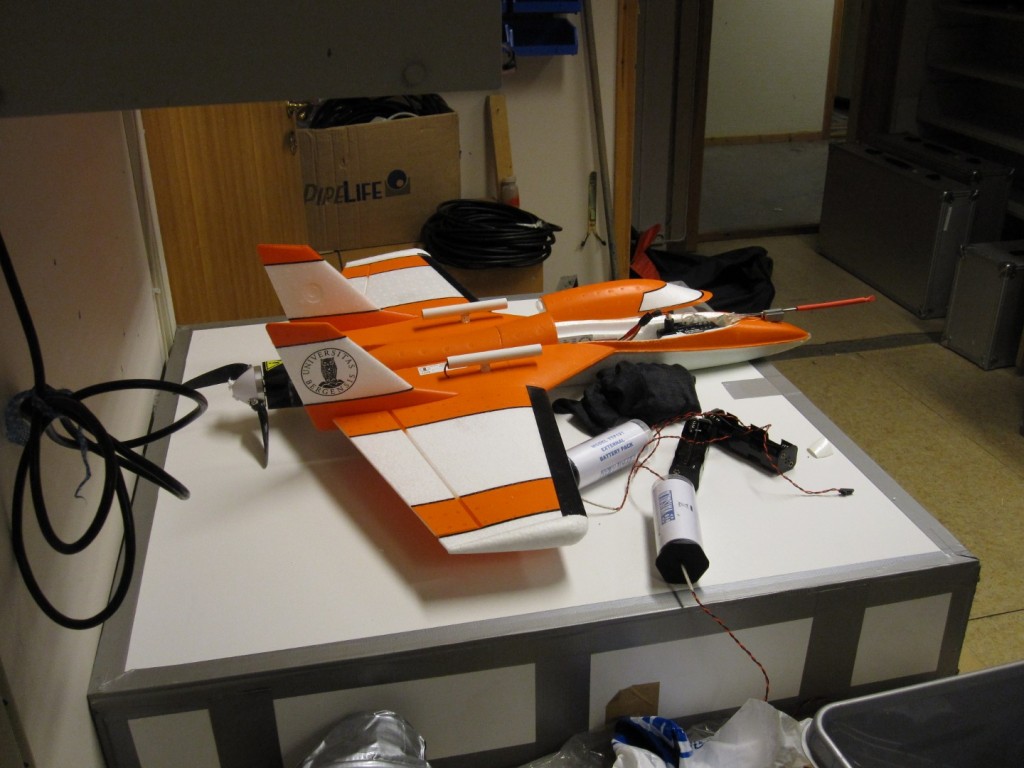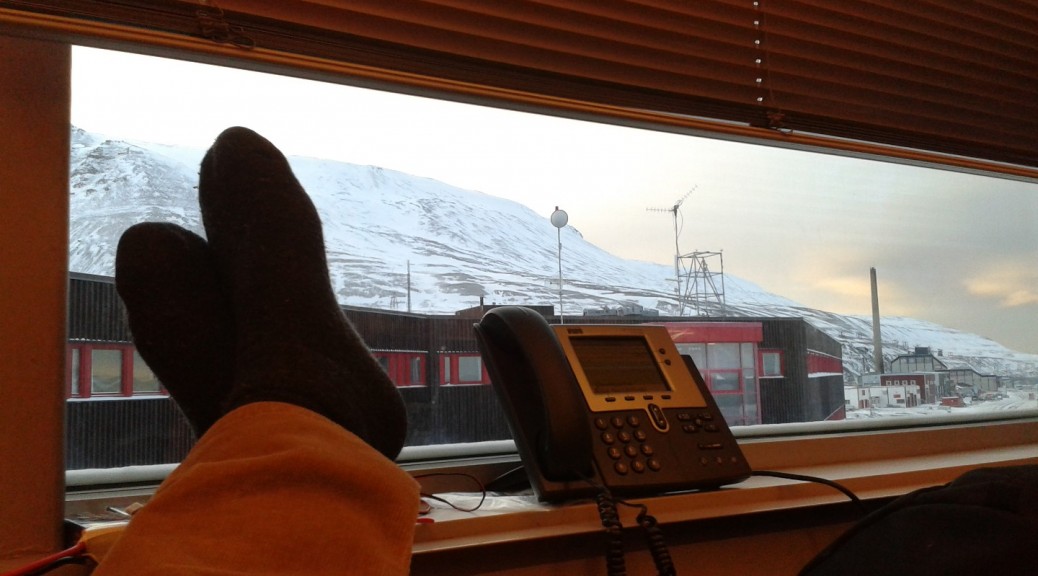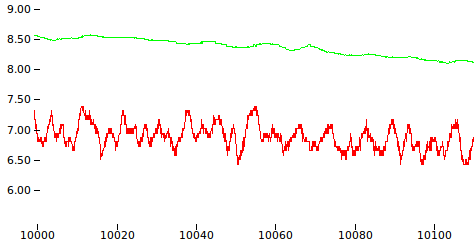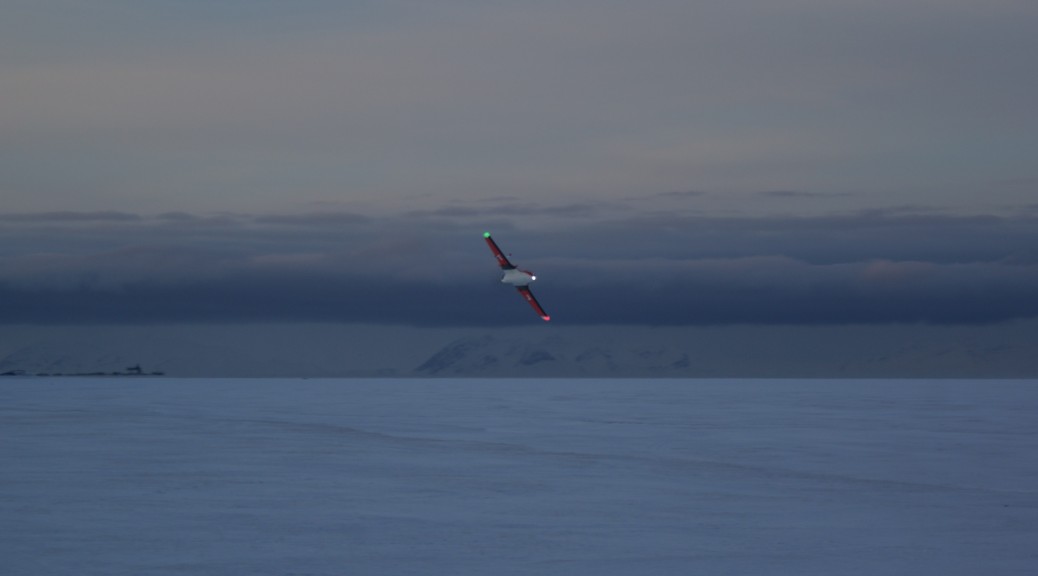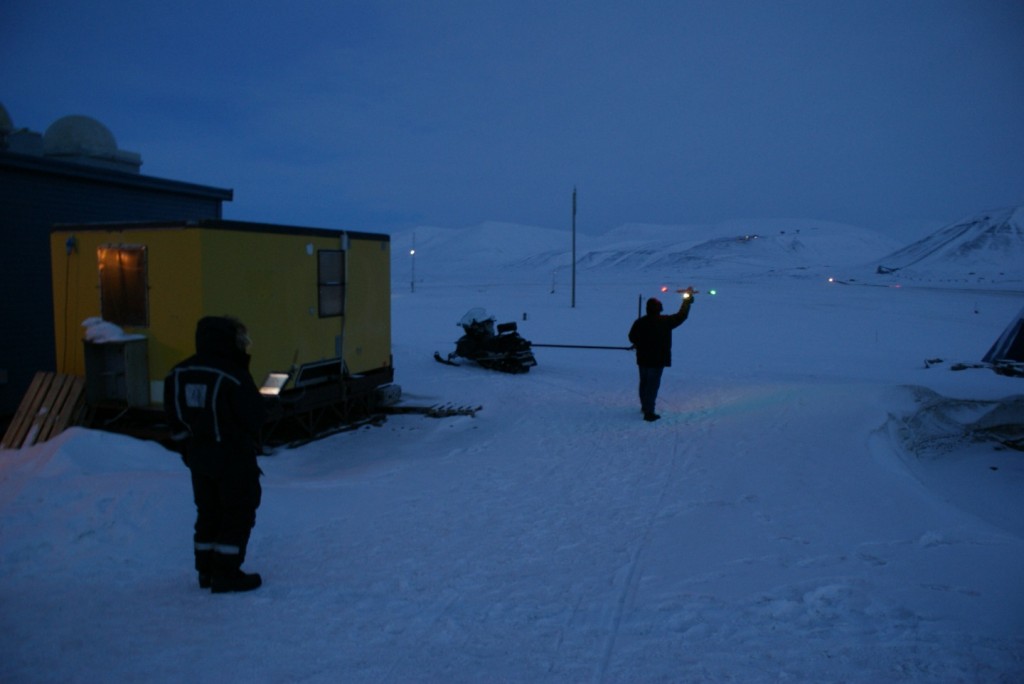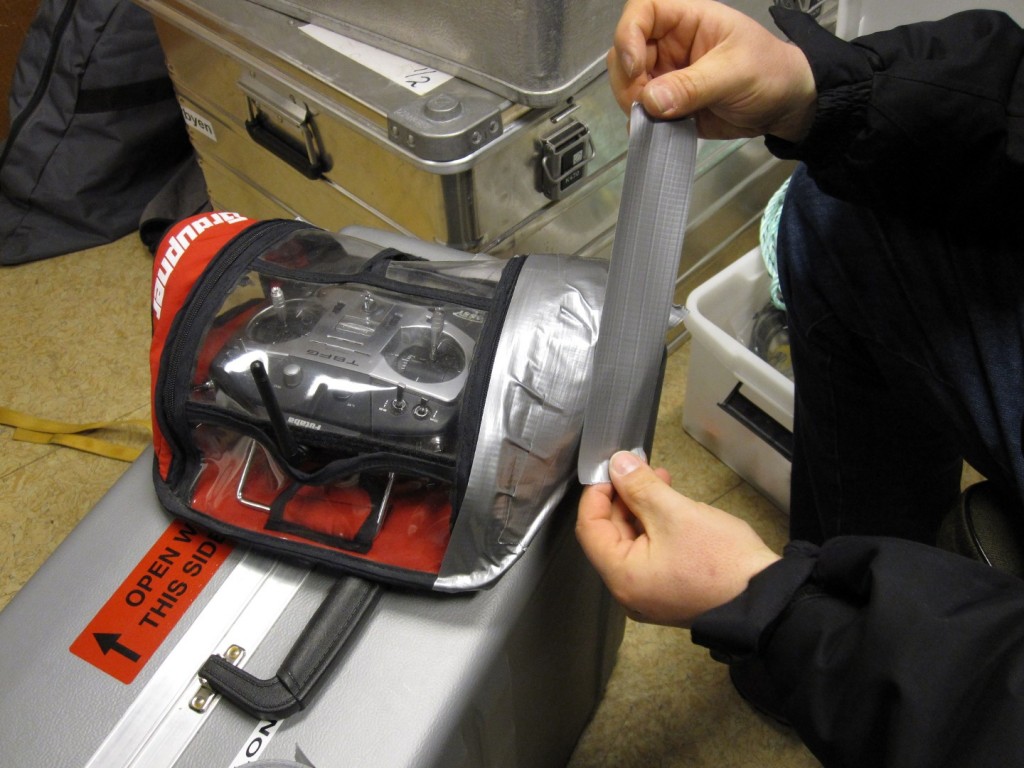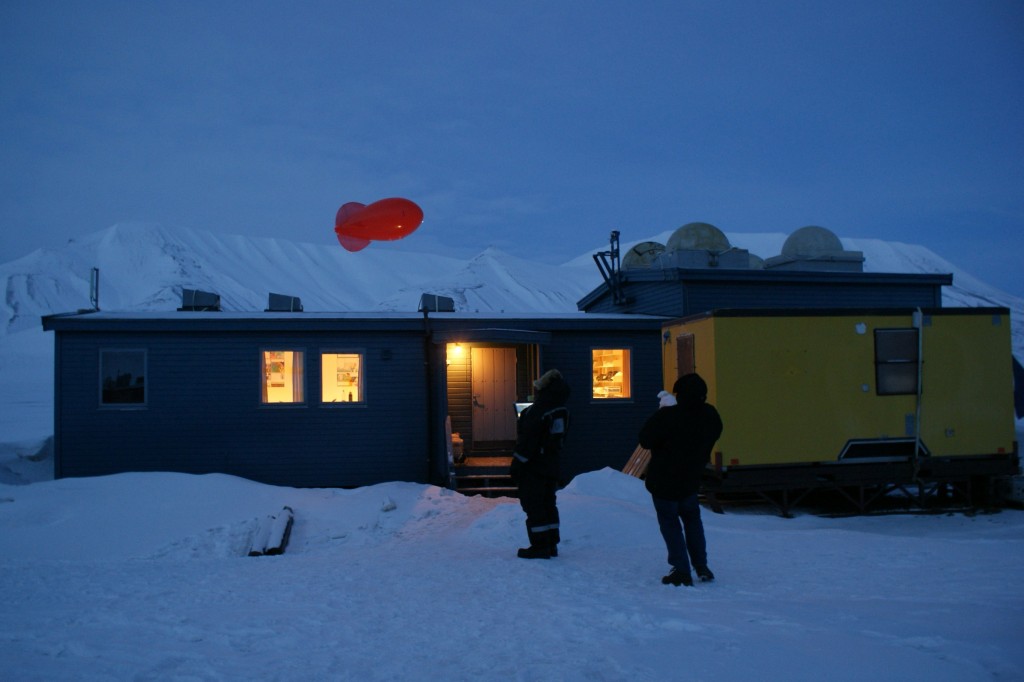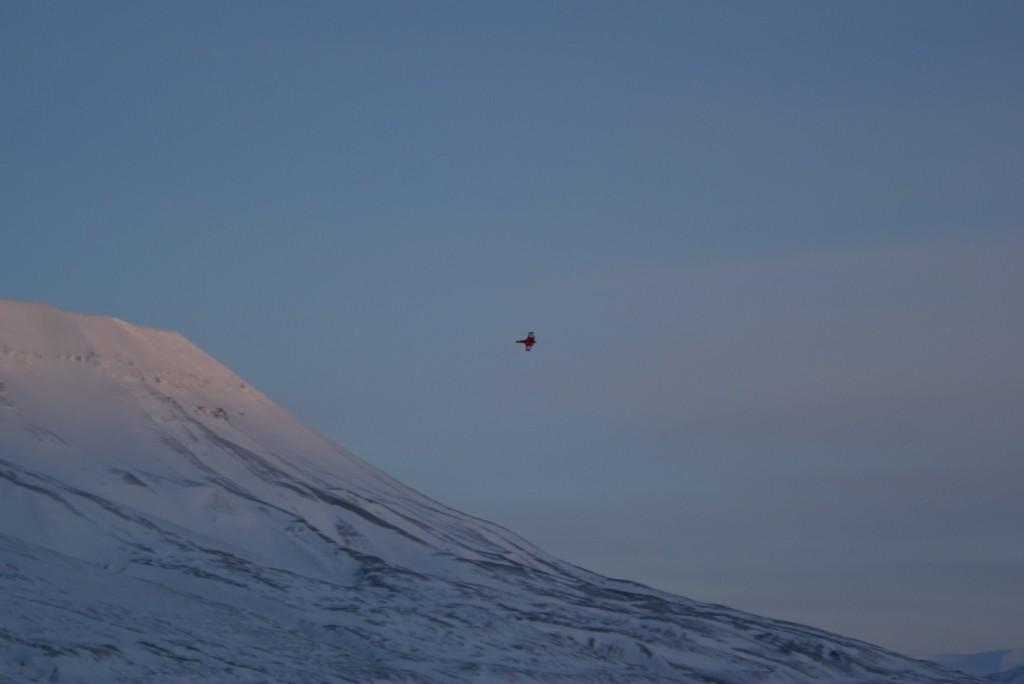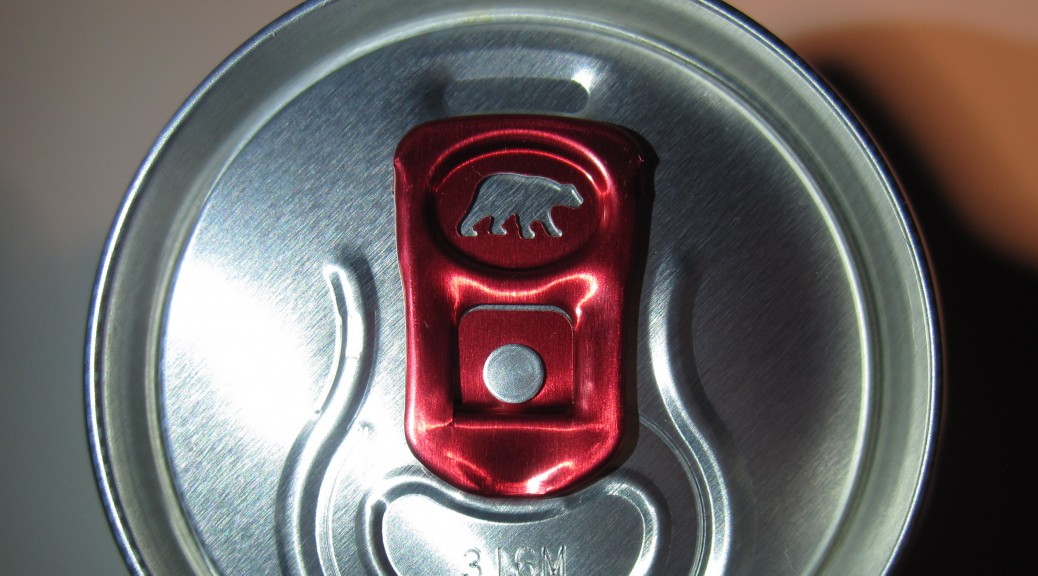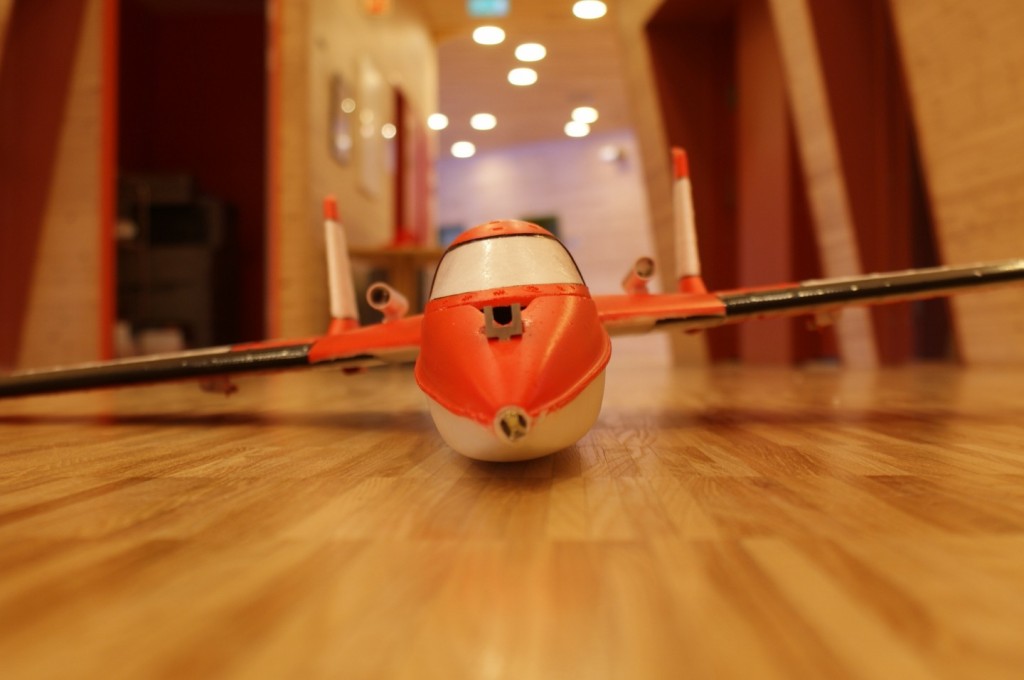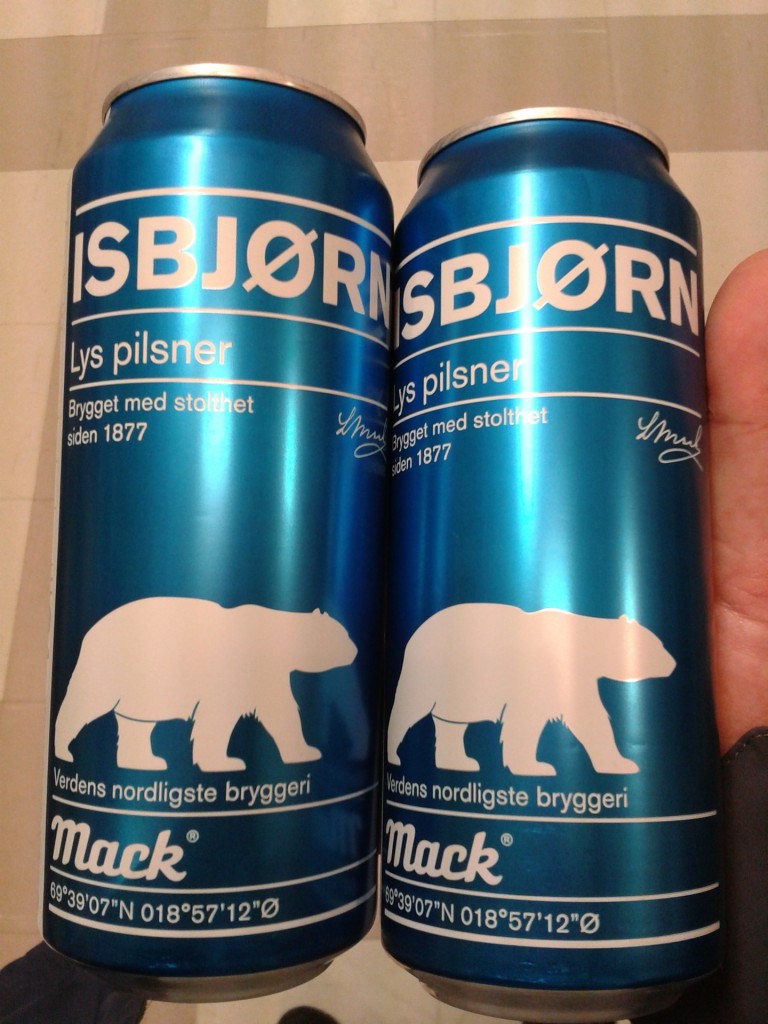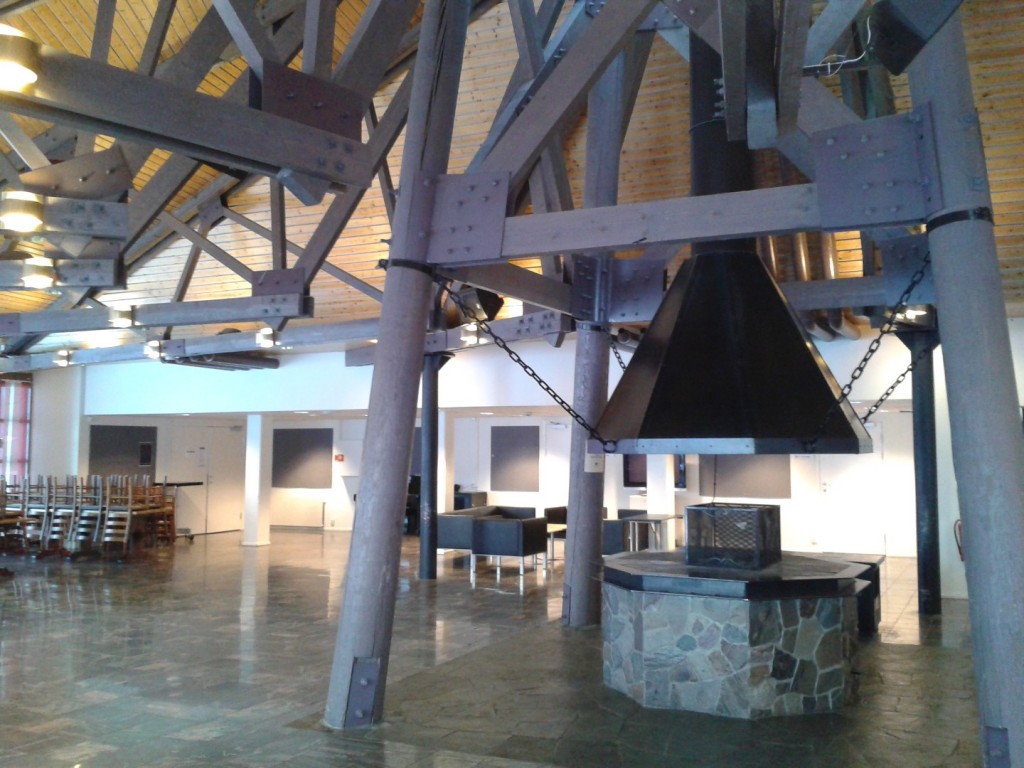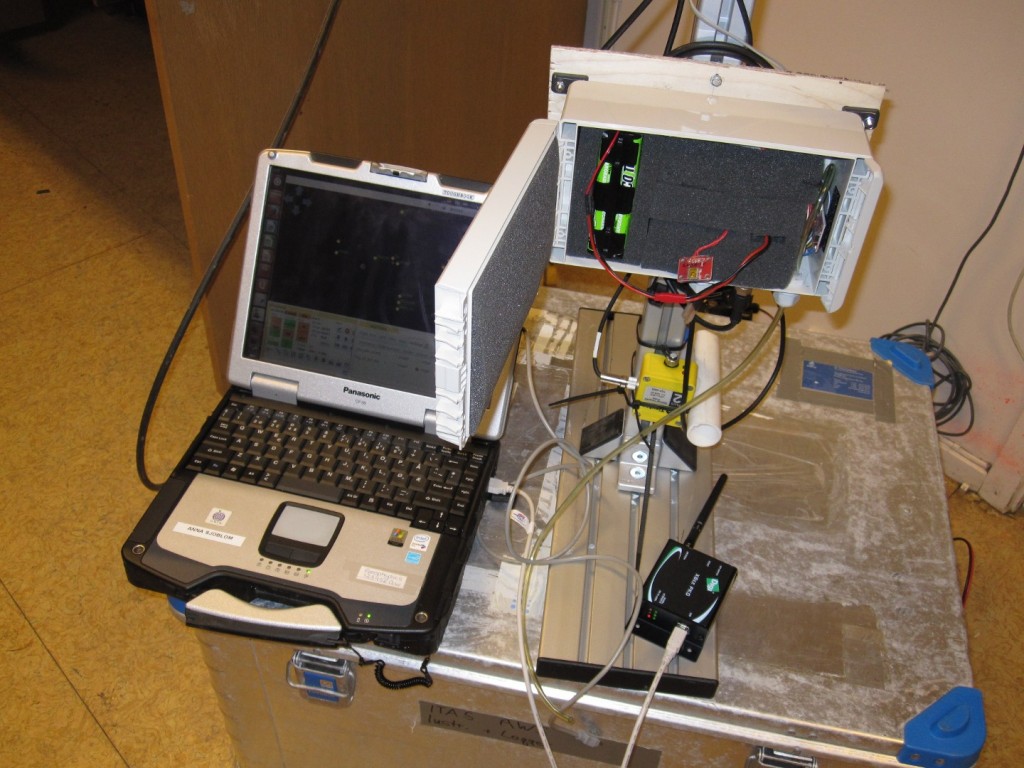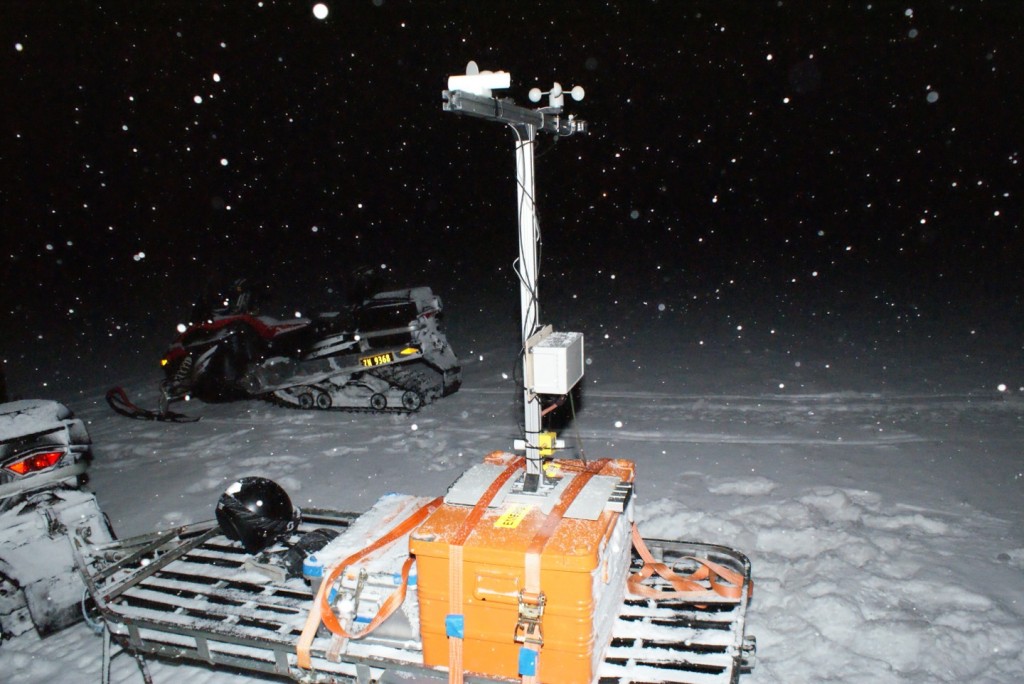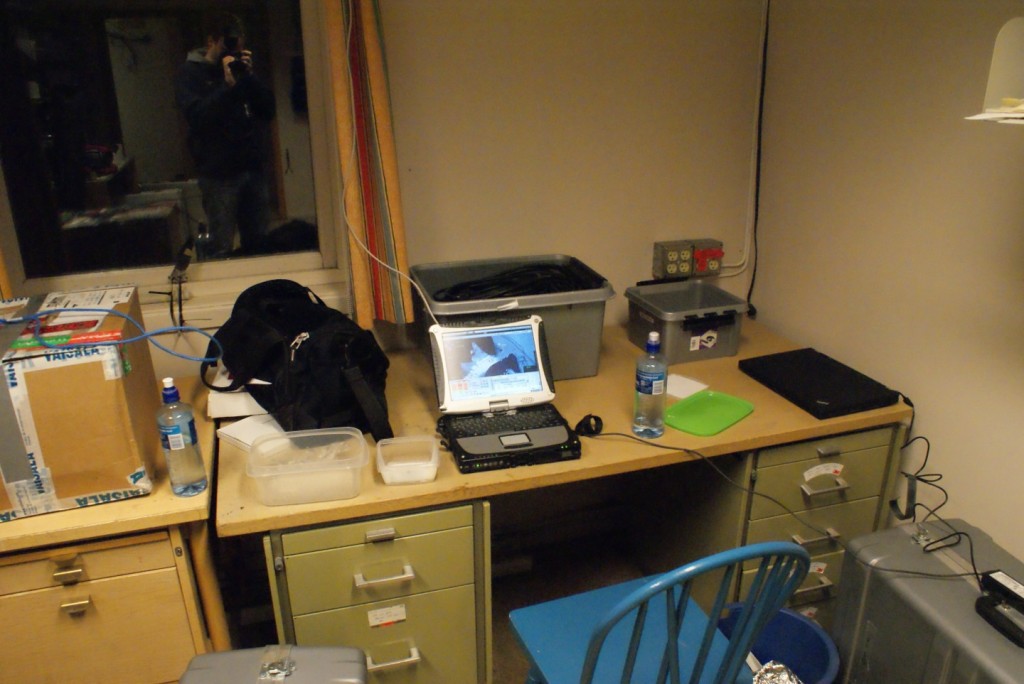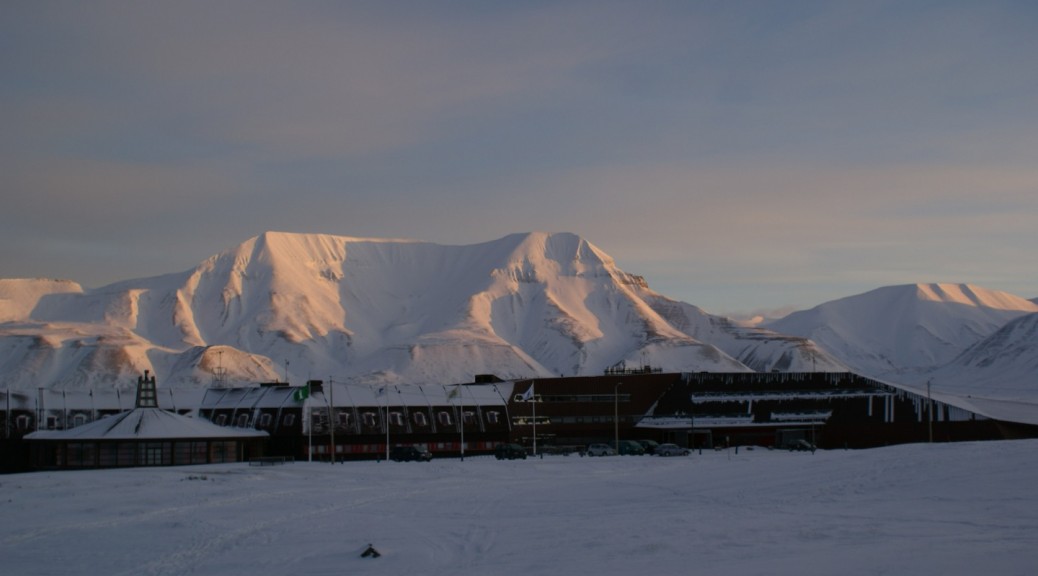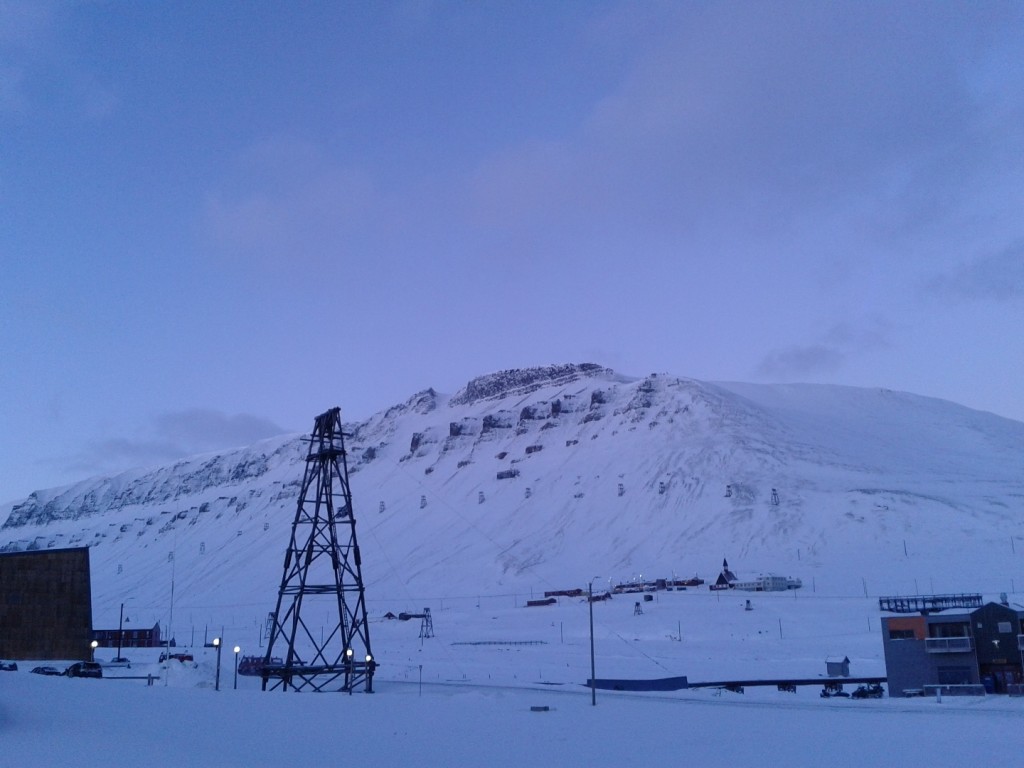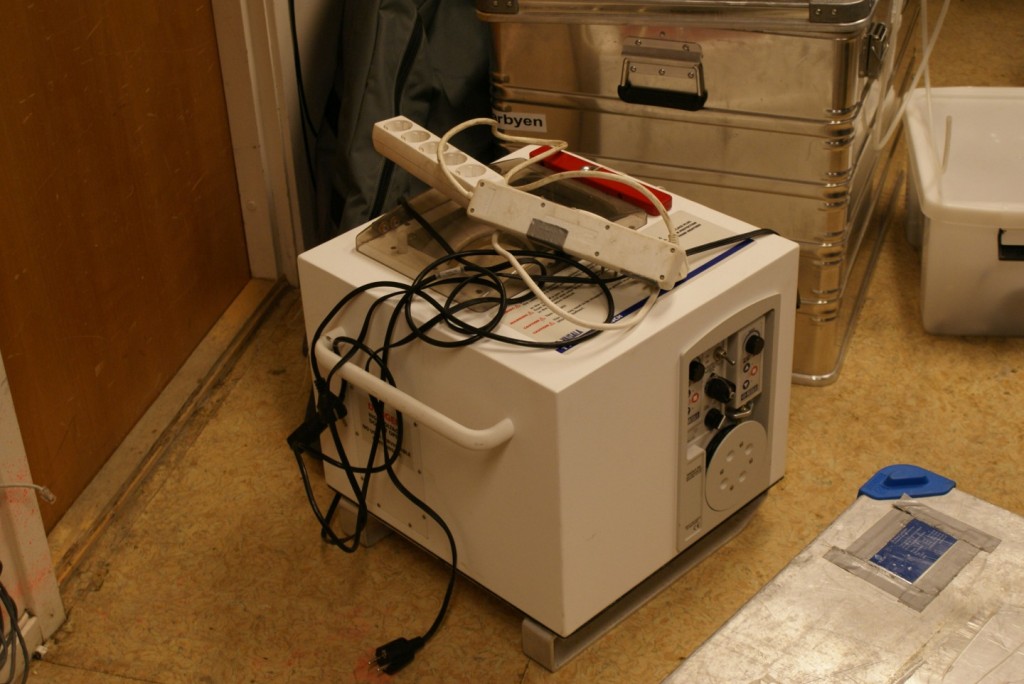The SUMO should fly but the the tower announces a clear air space for 6:30 PM only. Things in the office at UNIS get packed together, students come and ask questions about the used sensor. At 5 PM we receive a call that we could fly now. The incoming flight from the small settlement at the Svea coal mine on Svalbard has been cancelled.
The station is out of town and so a signal pistol and a rifle are compulsory. It is very unlikely, but not entirely impossible that a polar bear shows up. It is also a strict rule that you will use the rifle only if life is in danger.
The Adventalen webcam was shaking so it is no surprise: Outside in the valley there is a storm. That is probably the cause for the Svea flight cancellation. The anemometer on the mast shows 13m/s. Snow gets blown all around. The darkness starts but we try to do a camera flight as a test. It blows very violently, the plane measures 17m/s in 100m above ground. We have to set maximum speed against the wind in order not to fly backwards. The wind piles up the snow.
The aircraft can fly safely, but measurements do not make much sense. Certainly not with the sensitive sensors. The precision is miserable, the aircraft is buffeted back and forth by the gusts. The forecast tells us that we cannot hope for improvement. So we land with a heavy heart and arrange to meet for a beer.
We pack at the station, at UNIS and finally at the Guest House. We make some food and head for the pub. The other scientists had taken a look at the data and are happy with the values from the night before. The differences between land/sea are significant. The time in the cold was not useless.

